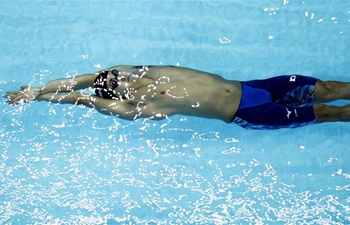GENEVA, Aug. 27 (Xinhua) -- Swiss scientists have discovered the mechanisms that help the cholera bacterium to survive grazing predators in aquatic environments.
The fingding, though outside the mainstream research on pathogenesis, may contribute to the fight against the epidemic on humans, according to a press release by the Swiss Federal Institute of Technology Lausanne (EPFL) on Monday.
Vibrio cholerae, which causes the diarrheal disease cholera, is a species of bacteria commonly found in aquatic environments, such as oceans, ponds, and rivers. There the bacterium has evolved formidable skills to ensure its survival, growth, and occasional transmission to humans, especially in endemic areas of the globe.
Within such environments, the bacterium must defend itself against predatory protozoan grazers, such as amoebae. One of the ways the pathogen defends itself against predatory aquatic amoebas involves "hitchhiking" them and hiding inside the amoeba. Once there, the bacterium resists digestion and establishes a replication niche within the host's osmoregulatory organelle. This organelle is essential for the amoeba to balance its internal water pressure with the pressure exerted by the environment.
In a new study recently published on the scientific journal Nature Communications, researchers at EPFL and partners have deciphered the molecular mechanisms that V. cholerae uses to colonize aquatic amoebas.
They demonstrated that the pathogen uses specific features that allow it to maintain its intra-amoebal replication niche and to ultimately escape from the succumbed host. Several of these features, including extracellular enzymes and flagellum-based motility, are considered minor virulence factors as they also play a role in human disease.
The study suggests that the aquatic milieu provides a training ground for V. cholerae and that adaptation towards amoebal predators might have contributed to V. cholerae's emergence as a major human pathogen.
Researchers said that the findings support the hypothesis that predation pressure can select for specific features that might have dual roles in the environment and within infected humans, and suggested that the study of the environmental lifestyle of the pathogen, though a bit outside the mainstream research on pathogenesis, may have a role to play in the fight against the epidemic on humans.

















